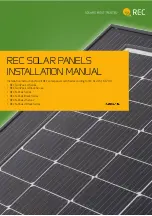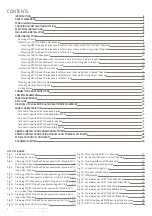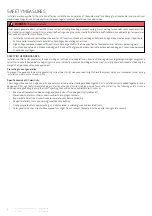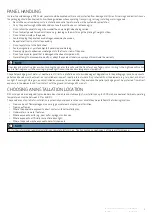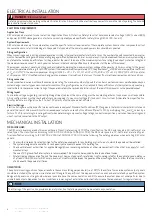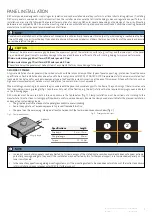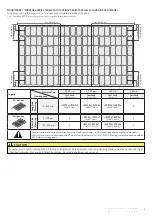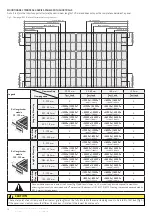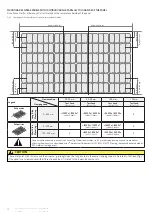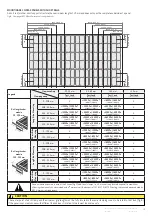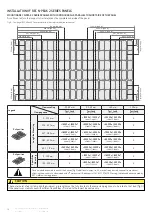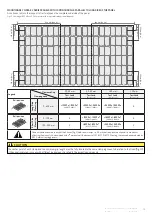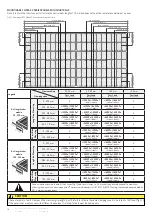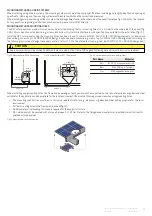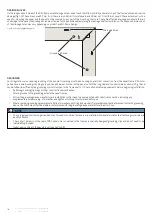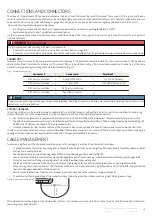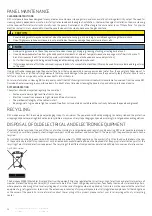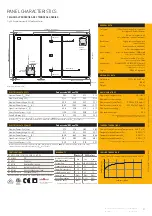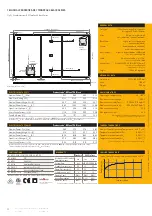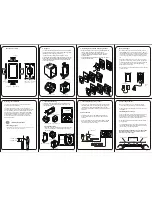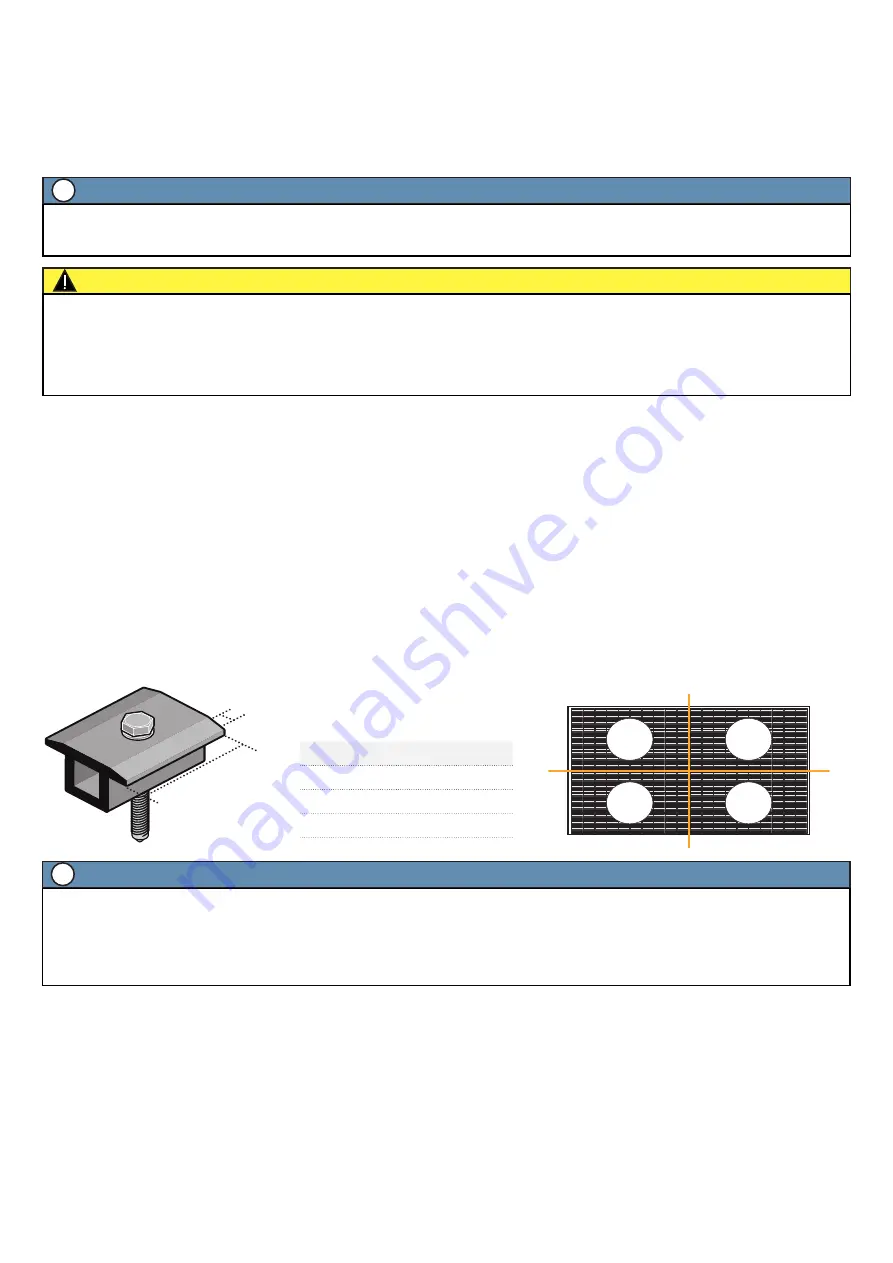
REC Installation Manual - REC Solar Panels - IEC
61215
/
61730
Rev L
-
09
.
21
Ref: PM
-
IM
-20
7
PANEL INSTALLATION
REC solar panels are designed for capturing solar radiation and can be installed where they conform to all local structural regulations. If installing
REC solar panels in overhead or vertical constructions, the installer must ensure that all local building codes and regulations specific to such
installations are correctly followed. There are di
ff
erent options for securing REC solar panels depending on the design of the array.
Mounting
hardware is not supplied by REC.
Ensure the mounting structure can withstand anticipated wind and snow loads.
Follow the mounting hardware
manufacturer’s instructions and recommendations at all times.
SECURING OF PANELS
A typical installation of solar panels will be carried out with suitable rails and clamps. Other types of panel support, e.g., plates, must meet the same
specifications. Such installations have been found to be in compliance with IEC
61215
& IEC
61730
requirements for the maximum stated test
loads which can be found for each individual panel type in the Panel Characteristics section at the end of this manual. Site-specific factors such as
high wind or snow levels must be taken into consideration to ensure this limit is not exceeded.
When installing on mounting rails, ensure they run underneath the panel and provide support to the frame. The positioning of the rail must ensure
that the minimum clamp grip length (fig.
1
) and the central point of the fixation, e.g., the bolt, is fully within the required clamping zone as indicated
on the following pages.
REC modules must be secured with a torque as shown in the table below (fig.
1
). Clamp installation must be carried out according to the
manufacturer’s instructions, including specific hardware and torque requirements. Ensure the clamps used are suitable for the planned installation
and expected system design loads.
• The grip area must not extend onto the panel glass and/or cause cell shading,
• Avoid the application of excessive pressure to prevent frame deformation,
• The panel must be secured, e.g., clamped, at least once in each of the four marked zones shown below (fig.
2
).
Fig.
1
: Clamp specifications
Fig.
2
: Panel quarter divisions
1
2
4
3
Min. grip length
Grip depth
NOTE
• In areas of snow build-up, panels can be subjected to forces in excess of the stated limit even when snow depth does not appear extreme,
potentially causing damage to the panel. If the installation may be a
ff
ected by this, further panel support is recommended, especially on the
lower row of panels.
• In the case of any questions regarding mounting systems, or if the mounting system to be used does not match any of the instructions shown
in this installation manual, please contact REC for further support.
i
Specifications
Length
Grip depth
5
mm -
10
mm
Min. grip length
40
mm
Torque
12
-
25
Nm
NOTE
Panels must be installed so that the cells are not shaded as this will drastically reduce electrical output. If partial shading is inevitable at certain
times of the day or year, it must be kept to an absolute minimum. Remove any labels or stickers that may be on the front of the panels and ensure
no residue is le
ft
on the glass.
i
CAUTION
There must be a minimum clearance gap between the uppermost part of the installation surface (e.g., roo
ft
op) and the lowest part of the panel
(i.e., underside of panel frame) to avoid any damage to the panel and to ensure su
ffi
cient airflow for cooling, helping to improve performance.
Minimum clearance gap
60
-cell format REC solar panels:
20
mm
Minimum clearance gap
72
-cell format REC solar panels:
40
mm
The surface below the panels must be kept clear of any objects that may cause damage to the panel.

